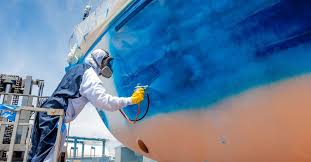Color plays a pivotal role in how we perceive products—from the vivid red of a sports car to the subtle eggshell white of interior walls. Behind these flawless finishes lies a complex process of paint color measurement, paint color matching, and coating color measurement. These processes ensure that color consistency, quality, and visual appeal are maintained across applications in industries like automotive, construction, aerospace, consumer goods, and more.
In this blog, we explore how color is measured and matched in paints and coatings, and why getting it right is critical for brand identity, product performance, and customer satisfaction.
Why Color Measurement in Paint and Coatings Matters
Color is often the first thing people notice about a product, and inconsistency—even by the smallest degree—can lead to customer dissatisfaction, expensive rework, or loss of trust. Therefore, paint color measurement and coating color measurement are essential tools in quality control and product development.
Key reasons include:
Consistency Across Production Batches
Whether you’re producing paint for thousands of walls or coating hundreds of car panels, uniformity is essential.
Brand Identity and Recognition
For brands like Coca-Cola or Ferrari, a slight color mismatch is unacceptable. Their iconic colors must be identical every time.
Functional Requirements
In sectors like aerospace or industrial machinery, color may indicate safety zones, temperature tolerance, or other functional purposes.
Cost Efficiency
Avoiding mismatches means less rework, reduced material waste, and more efficient production.
Understanding Paint Color Measurement
Paint color measurement is the process of quantifying the color of a paint sample using scientific instruments, translating what the human eye sees into objective, numerical data.
The Core Instrument: Spectrophotometer
A spectrophotometer is the go-to device for measuring color in paints. It works by shining light on a surface and analyzing how that light is reflected or absorbed at various wavelengths.
Color values are often reported in the CIELAB color space, where:
L* indicates lightness
a* shows red-green axis
b* represents the yellow-blue axis
These values allow manufacturers to track exact color differences and assess whether a product falls within acceptable tolerance levels (usually measured as ΔE).
Paint Color Matching: Art Meets Science
Paint color matching is the process of formulating a new paint or coating to visually and instrumentally match a reference color. It may involve creating an exact duplicate of a competitor’s paint, a sample from nature, or even an existing product batch.
How Paint Color Matching Works:
Sample Analysis
A spectrophotometer measures the target sample to determine its color values.
Software Formulation
Advanced color matching software uses databases of pigments and past formulas to suggest pigment combinations that will match the target color.
Trial and Correction
A sample is mixed and tested. If it doesn’t meet the color target, the software can suggest corrections based on the measured differences.
Approval and Documentation
Once the match is approved visually and instrumentally, the formula is stored for future reference and scaled up for production.
Paint color matching is both a science and an art. While instruments provide data, skilled technicians bring experience in how pigment behavior, drying, surface texture, and gloss affect perceived color.
Coating Color Measurement: Beyond Just Paint
While paint color measurement typically focuses on decorative or protective paints, coating color measurement goes further into performance finishes used in automotive, aerospace, appliances, packaging, and more.
Unique Challenges in Coating Color Measurement:
Effect Pigments (Pearlescent, Metallic)
These coatings change appearance with viewing angles, requiring multi-angle spectrophotometers.
Gloss and Texture
A coating’s surface properties affect light reflection and perceived color, necessitating gloss meters or imaging systems.
Layered Systems
Many industrial coatings include a primer, basecoat, and clearcoat—all affecting the final appearance. Color measurement must account for the full system.
Translucency and Substrate Impact
Transparent or semi-transparent coatings allow the substrate’s color to show through, which alters measurement and formulation requirements.
Best Practices in Paint and Coating Color Control
Consistency in color requires more than just high-tech instruments. Here are the key practices that help maintain control:
1. Standardized Lighting and Viewing Conditions
Always assess samples under standardized light sources (e.g., D65 daylight) to avoid metamerism—where colors appear differently under various lighting.
2. Regular Instrument Calibration
Spectrophotometers and gloss meters must be calibrated regularly using certified reference tiles to maintain accuracy.
3. Defined Color Tolerances (ΔE Values)
Set clear color tolerance levels for each product and application. High-precision products may require ΔE < 0.5, while others may allow more leeway.
4. Digital Color Libraries and Databases
Store approved color standards and formulations in centralized systems to streamline production, ensure traceability, and speed up future color matching.
5. Training and Communication
Even with advanced tools, human expertise matters. Training technicians in color theory, measurement principles, and visual assessment ensures better judgment and decision-making.
Industries That Rely on Paint and Coating Color Measurement
Automotive: Matching bumpers, doors, and panels coated in different facilities.
Construction: Wall paints, facade coatings, and architectural finishes that must match across different materials.
Consumer Electronics: Precision color matching for plastic housings and metal casings.
Aerospace: Uniform coatings that perform under extreme conditions.
Industrial Equipment: Durable coatings with strict color requirements for branding and safety.
Emerging Technologies in Color Measurement
The future of paint color matching and coating color measurement is being shaped by AI, automation, and cloud-based technologies. Some innovations include:
Real-time, inline color measurement systems integrated into production lines for immediate feedback.
Mobile spectrophotometers for on-site color evaluation.
AI-powered formulation software that learns from past corrections to reduce trial-and-error.
Digital color communication platforms that share color data across global supply chains instantly.
These tools are making color management faster, more precise, and scalable across geographies.
Conclusion: Precision Makes the Difference
In today’s competitive markets, color is a defining element of product quality and brand recognition. Accurate paint color measurement, efficient paint color matching, and reliable coating color measurement are essential to delivering flawless finishes that meet both aesthetic and functional expectations.
By investing in the right technology, training, and processes, manufacturers can achieve exceptional consistency, reduce production costs, and create visually stunning, high-performing products—every single time.

